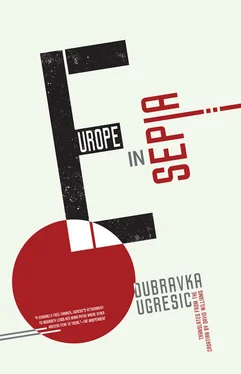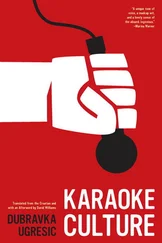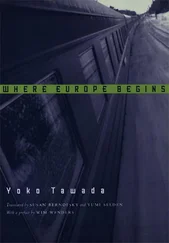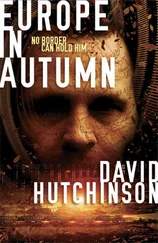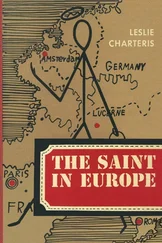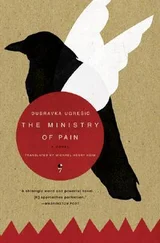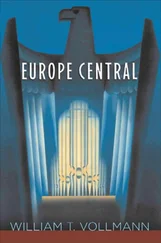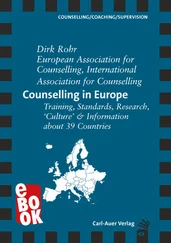Croats might not be pigeons, but they still suffer a fatal attraction for public monuments. Since Croatia gained independence in 1991, many monuments to the victims of fascism have suffered damage. The majority took place in the immediate post-independence years, a time of anti-Yugoslav (anti-Serbian, and anti-communist) hysteria. The new authorities had a fair degree of empathy for vandal passions provoked by collective Croatian traumas. In historical perspective, the Croatian reaction confirmed a paradox: Trauma is sometimes greatest where there is least cause; anti-communist hysteria proved most vehement where communism itself had been most benign.
2.
The truth is, even I didn’t really pay monuments any mind until I discovered a surprising truth: Most people engage in vandalism for the cash, not out of ideological or aesthetic convictions. Everyone in Holland knows who’s most enamored with copper and bronze. Yes, the Poles. In February of this year statues were stolen from atop graves in the Dutch settlements of Norg and Vries. Rheden lost a statue of the writer Simon Carmiggelt, and, wary of new thefts, a statue of Queen Beatrix was spirited away into storage. A couple of years ago a public sculpture of a mother and child, erected in memory of the victims of the Second World War, was stolen from Marienberg. In 2007 a copy of Rodin’s The Thinker was stolen in Laren. The cities of Zwolle and Nijmegen recently resolved to put their public statues in safekeeping, and in Eindhoven the police have fitted public sculptures with GPS units. If the sculptures from Eindhoven go for a stroll, the police will know where to find them. The list of Polish sins is long: Anything with a glint of copper is a target for Polish thieves. If the trains aren’t running, it’s because the Poles have ripped out the copper cables. If there’s a power loss, it’s because the Poles have pilfered the copper cables from a few windmills, the pride of the Dutch national landscape. If a remnant from the First World War explodes in the Ypres region, it’s because the Poles (ah, those moles!) have been burrowing the fields in search of copper, happy to accept the risks. The Dutch — for whom the Germans, who thieved Dutch bicycles at the close of the Second World War, had long been the preferred enemy — now blame the Poles for everything. In the settlement of Menaldum the police seized the bicycles of Polish workers living at the Schatzenburg trailer park, convinced they were stolen. It turned out the bikes had been given to the Poles by their employer so they’d be able to ride to work. “Poles” (a collective term for all East Europeans, of whom Poles are simply the most numerous) most often live in what the Dutch refer to as “Polish hotels,” which in reality means in cabins or camp trailers on the peripheries of the burgs where they work. The Dutch rent camp trailers to Poles for between fifty and eighty euro a week. That’s why many Poles prefer to sleep in tents. “Poles like working in Dutch horticulture. How can I best explain it? It’s a matter of chemistry. Dutch growers and Poles are like peas in a pod.” That’s how Johan de Jong, the avuncular general director of Holland Contracting, explained things to the media. He’s just one of the many Dutch who help Poles earn a wage in Holland, the average wage for undocumented labor being about four euro an hour, and it goes without saying that most Polish labor is indeed such.
There’s a legend about how a couple of Dutch discovered copper wire while fighting over who had dibs on a copper coin they’d spotted in the street. The Poles have now got themselves mixed up in the story. In almost every country the greatest thefts are perpetrated by natives —in Holland, the Dutch; in Croatia, the Croats; in Poland, the Poles — snugly protected by myths of great theft and devastation being the work of others , chiefly foreigners. Sometimes that other is a Gypsy, sometimes a Jew, other times it’s a Pole, Romanian, Serb, or Albanian. There’s no voice of reason that might prevent an embittered Dutchman from accusing a Pole of thieving cabbages from his garden. That’s just how things are for the moment.
Poles don’t steal cabbages. Poles steal bronze and copper. Not even Slovaks steal cabbage. Slovaks steal teeth. In a video clip he filmed himself and uploaded to the Internet, a Slovak recently admitted that he’d long been burgling the graves of famous people buried at the Zentralfriedhof, Vienna’s central graveyard. The teeth-stealing Slovak initially made off with the watches of the deceased, but soon figured he might earn more on celebrity teeth. Apart from those of Johann Strauss and Johannes Brahms, who forensics experts have confirmed are missing teeth, the Slovak claims to be hoarding the teeth of many other famous dead, prompting the Viennese police to open the graves of Beethoven, Schubert, Schönberg, and others, just to check if all bones are present and accounted for. Charges are pending against the unusual Slovak with a fetish for pillaging celebrity skeletons’ teeth.
3.
I went to Ireland in June of this year. A Dublin friend and I set off by car for Doolin, and from there took a small boat to Inisheer, the smallest of the three Aran Islands. Lashed by a stormy silver sea and menaced by a sky of black-gray clouds, Inisheer was a place of dramatic desolation. In a local café—the house of one of the islanders — you could buy hand-knitted scarves and caps, grab a coffee from the vending machine, and try a piece of local apple strudel, all of which we dutifully did. From the tight-lipped proprietress, who never set down her knitting needles, we learned there was a doctor on the island, a Croat from Zadar. Making our way down the road to the ferry terminal we came across a lonely figure, a man pushing two bicycles, wearing a suit splattered in white paint, on his nose a huge pair of glasses with yellowed lenses. The glasses could have been those of a con man, a motorcyclist, or a scuba diver, but who would know.
“Excuse me, do you live here?”
“Aaaa. .”
An indiscernible sound emerged from the man’s mouth.
“And might you know where the local doctor lives?”
“Aaaa. .” he pointed off into the distance.
“You’re not Irish?”
“Iiii. . Latvian. .” he said, his mouth spreading into a toothless grin.
Our interlocutor had a dark-red complexion, as islanders in the north seas often do, bloodshot from constant exposure to the assaults of the wind, almost as if perma-tanned — but inside out. He was, I think, blind drunk.
Like our lonely Latvian on Inisheer, at least two-hundred-thousand Poles and other East European immigrants have made their way to and through Ireland in recent years, and it’s fair to say that the Irish love affair with “Easterners” is over. Unemployment is soaring, and demands that “Poles” be banned from residing in the country for more than two years are becoming increasingly shrill.
4.
In Dublin I set off for the National Botanic Gardens, where even die-hard Dubliners are thin on the ground. Home to over seventeen thousand plant species from around the globe, the gardens were founded at the end of the eighteenth century by the Royal Dublin Society. Biodiversity is the gardens’ ideological plume and pride. My attention was drawn to plaques mounted next to certain plants, emblazoned with the question Why is it a problem in Ireland? and an explanation of said problem in somewhat smaller type. These eye-catching “wanted posters” taught me a lot: for example, that the South American Gunnera tinctoria , which grows to a height of two meters, is particularly invasive. Wherever Gunnera tinctoria takes root, native flora just doesn’t stand a chance, and consequently this ambitious plant is soon to be banned. The same applies to the giant rhubarb, and this is entirely understandable; a fleeting glance at its mighty leaves is enough to sow fear. Sasa palmata , a wide-leafed Japanese bamboo that grows to three meters, is likewise a threat to native flora; native sons are strangled dead wherever this particular Japanese immigrant takes root. The impressively named Rhododendron × superponticum is a hybrid that gladly leaps garden fences, integration and adjustment an absolute breeze. But rumor has it that it sabotages the regeneration of native trees and so it too is threatened with permanent expulsion from Ireland. The Asian Rosa rugosa , a pretty rose-colored shrub that grows on sand dunes alongside the ocean and speeds the erosion of native sands, is best described as a kind of floral Trojan horse. And so its time has also been called; every further contact with Irish soil is to be officially banned. Crassula helmsii , an aquatic invader that launched its invasion of Ireland from far-off New Zealand, is particularly noxious; resistant to frost, once it takes root it’s impossible to dig out.
Читать дальше
